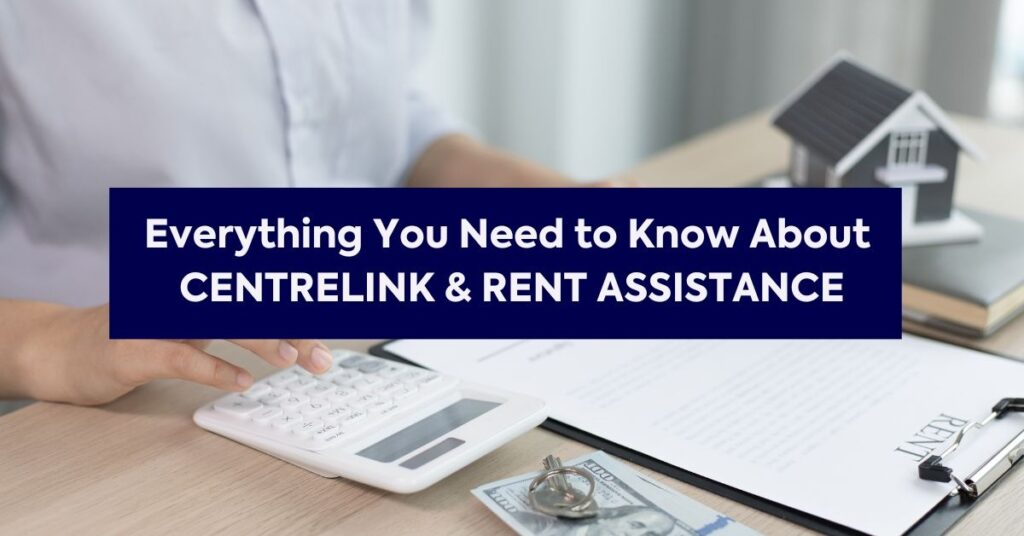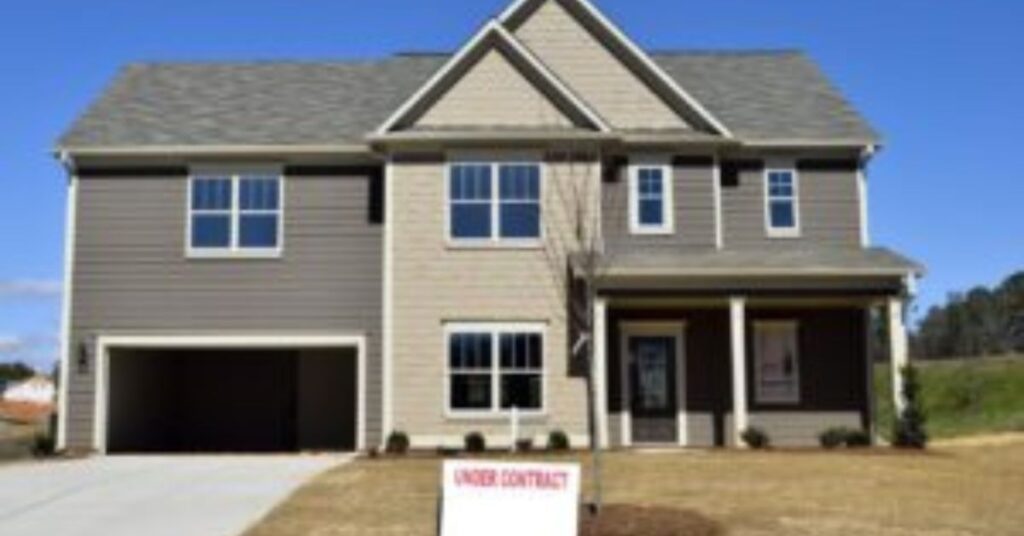Planning to build a duplex? It’s a smart move for generating extra income or housing a family. However, before you even consider floor plans, you need to get a handle on the costs. That’s where a duplex building cost calculator comes in. It’s your first stop for figuring out if your project is financially viable. Think of it as your financial roadmap, helping you budget realistically right from the start.
What Is a Duplex Building Cost Calculator & Why You Need One
If you’re considering building a duplex, it’s a major decision. Before you start drawing up plans or talking to builders, it’s essential to understand the complete cost of building a duplex. This is where a duplex building cost calculator comes into play, and it is essentially a financial road map for the whole decision-making process, which will help you understand what it’s likely to cost to build two dwellings from the bottom up.
So, why do you need a duplex building cost calculator? Building a duplex is not the same as just buying something off the shelf; it will be subject to a wide range of variances in price according to a huge variety of factors. Without a sturdy calculator, you are simply guessing, and guessing is just a short trip to blowing your budget and stressing yourself out a ferocious amount! A good duplex calculator provides you with the overall picture and some comprehension of where your money is actually being spent. It will help to break down the cost into manageable parts so that you are not blindsided by unexpected costs down the line. Once again, knowing your potential cost upfront is by far the most important part of a successful build.
Here’s a quick look at what goes into the numbers:
- Size and Layout: How big will each unit be? Will they be mirror images or have different layouts? This directly impacts the amount of materials and labour needed.
- Materials and Finishes: Are you opting for basic, hard-wearing finishes, or are you dreaming of stone benchtops and high-end fixtures? The quality of your selections makes a significant difference.
- Location: Building costs vary a lot from one area to another. Local labour rates, council fees, and even site conditions play a huge role.
- Site Preparation: Is your block flat and ready to go, or does it need significant excavation, retaining walls, or tree removal? These are often overlooked costs.
- Professional Fees: Don’t forget about architects, designers, surveyors, and permit applications. These ‘soft costs’ add up quickly.
Using a calculator helps you get a realistic figure early on, allowing you to make informed decisions about yourduplex project. It’s about planning smart so you can build with confidence, knowing you’ve accounted for the majority of expenses before they even arise.
Key Inputs: What Data Matters in a Duplex Building Cost Calculator
Knowing some critical information is important when you are figuring out how much building a duplex is going to cost you. Think of this as the foundational information you need to start building a budget. If you do not have this information, you simply do not know.
The size of the duplex is a big consideration. This is not just based on the overall square metres it will be, but also on how the space is broken down. Are both units going to be virtually identical, or does one unit have a different layout? The number of bedrooms and bathrooms in each unit will affect the cost of building the duplex, too. For example, the more bathrooms you have, the more plumbing you will have, and that amounts to more costs in building the duplex.
Here’s a look at some of the main things you’ll need to feed into the calculator:
- Total Floor Area: The overall square metres of both dwellings combined. This is often the starting point for per-square-metre cost estimates.
- Number of Bedrooms and Bathrooms: More of these generally means higher costs due to increased fixtures and services.
- Number of Storeys: Single-storey builds can sometimes be cheaper than two-storey ones, but this can vary depending on site complexity and roof design.
- Specific Room Requirements: Do you need a home office, a separate dining room, or perhaps a larger garage? These details influence the overall footprint and complexity.
Beyond the basic dimensions, the quality of the materials you choose makes a significant difference. Are you opting for standard laminate benchtops and basic carpet, or are you leaning towards stone surfaces and premium timber flooring? Even small choices, like the type of tapware or the brand of appliances, can add up. Similarly, the complexity of the design itself – think intricate rooflines or unusual wall angles – will impact labour and material costs.
Size & Layout Considerations: How Square Footage and Duplex Type Affect Cost

When estimating the costs of duplex construction, the size and configuration of design are significant factors. It’s not only the total square metres but also shape and arrangement of the two units. A bigger footprint means more materials and labour, which in fact causes costs to rise. Generally, building a duplex could range from $115 to $240 per square foot, however, this can vary greatly depending on the above two factors.
Consider the configuration. Mirror-image floor plans (where one unit mirrors back-to-back the other) are typically less expensive to build. This is due to sharing plumbing and structural configurations more easily since you can line the kitchens and bathrooms back-to-back. Simple roof conditions and less complicated angles also diminish construction time and reduce material waste. The opposite holds true when constructing a more complicated, more individual design, such as split levels or individual floor plans for each unit which will raise your cost.
Here’s a rough idea of how different design choices can impact the cost per square metre:
- Simple, Mirror-Image Layouts: Often the most cost-effective. Shared walls and services reduce complexity.
- Slightly Varied Layouts: Minor differences between units can add a bit to the cost due to duplicated, but slightly altered, services.
- Complex or Non-Mirrored Designs: Significant variations, different rooflines, or complex internal layouts will increase costs due to customisation and increased labour.
When you get quotes, make sure they specify the cost per square metre for the build itself. This helps you compare apples with apples, especially when looking at differentdesign options. Remember, a slightly larger but more efficiently designed duplex might end up being more economical in the long run than a smaller, more complicated one.
Material Quality & Finish Levels
When you’re working out how much it will cost to build a duplex, your material and finish selections will affect the final number. It’s not just the substantial items, such as bricks or timber, it is every other detail on the inside and outside. The calculator needs to account for this affordability, as standard finishes are much less than the premium ones.
Take flooring, for example. Vinyl planks are inexpensive but if you go with solid timber or tiles, it adds up quickly. The same goes for kitchen benchtops, as well; laminate is cheap, but if you add granite or quartz, it will increase the price significantly. Even the type of paint, the quality of light fittings and the fixtures in your bathrooms are contributors too.
The calculator helps you see the financial impact of these decisions upfront.
Here’s a general idea of how different levels might affect costs:
- Standard Finishes: This usually includes good-quality, but mass-produced, materials. Think ceramic tiles, laminate benchtops, standard carpet, and basic paint finishes. It’s about getting a solid, functional, and attractive home without unnecessary extravagance.
- Premium Finishes: This level involves higher-grade materials and more customisation. We’re talking about things like engineered stone benchtops, solid timber flooring, designer tiles, higher-end tapware, and perhaps more complex joinery. These choices add a touch of luxury and can increase the overall build cost by a noticeable margin.
When using the calculator, you’ll likely be prompted to select from categories like:
- Flooring type (e.g., carpet, tile, timber)
- Benchtop material (e.g., laminate, stone, concrete)
- Cabinetry finishes (e.g., melamine, timber veneer, painted)
- Tapware and fixture quality (e.g., standard, designer)
- Wall finishes (e.g., paint, wallpaper, feature panels)
By inputting these choices, the calculator can provide a more realistic estimate, reflecting the actual quality and style you intend for your duplex.
Land, Site Prep & Local Variables
When you’re calculating the cost to build a duplex, don’t forget to consider the ground it will go on, and what that ground consists of. The location of your build site can have a dramatic effect on the total cost of your project. Let’s think about this: you are contemplating a build in the heart of a major city centre versus a project in a rural area. The costs associated with land, permits, and labour are not equal. In order for our calculator to account for these geographic variances, we need to know your general location.
Another important factor is site preparation. The site preparation process may entail simply clearing and grading land so that drainage is possible; or you may need to excavate foundations and bring in utilities such as water, sewer or electricity. These initial site preparation costs will vary depending on the work involved or the site being prepared. The complexity of your site, i.e. flat block, steep hill, or demolishing existing structures, will all play a part in these initial site preparation costs.
Here are some key local variables that affect your duplex build cost:
- Land Costs: This varies wildly. Urban land is generally much more expensive than rural land.
- Permit and Approval Fees: Local council regulations and fees differ from one area to another.
- Labour Rates: The cost of skilled tradespeople can fluctuate based on local demand and availability.
- Material Delivery Costs: Transporting building materials to remote areas will add to the expense.
- Soil Conditions: Poor or unstable soil might require more extensive and costly foundation work.
The calculator uses your input location to adjust for typical regional cost variations. However, it’s always wise to get specific quotes for your exact site once you have a clearer picture of your project.
For instance, a site that requires extensive excavation due to rocky terrain or a high water table will naturally cost more to prepare than a simple, flat block. Similarly, if your chosen location has limited access for large construction vehicles, you might incur extra costs for smaller deliveries or specialised equipment. These are the kinds of real-world factors that a good calculator tries to account for by asking for your location.
Soft Costs & Hidden Expenses

There are also “soft costs” and other necessary expenses beyond the tangible costs of building a duplex that may catch you by surprise if you are not careful. This includes a development application (DA) or a complying development certificate (CDC) fee you will need to pay to get your plans approved by your council, and there could be quite a difference in fees depending on your local government area.
There will also be design fees from the architect you are using or the building designer you have selected, as their fees will be incorporated into what was suggested if you went with a standard building plan; there could also be some minor amendments or changes to your plan that will occur, and a small fee that may come as a result.
You should also consider all of the fees for consultants, as a surveyor, structural engineer, & potentially a geotechnical report will need to be done depending on your site. These are there to ensure that your duplex is built correctly and safely, but they still add to your overall cost to build a duplex home, as you would have to pay out regardless of the original cost.
Finally, there are preliminary builder costs, which are charges for updated quotes, setting up the contract, site surveys, etc., before any building work commences.
Here’s a rough idea of what these might look like:
- Permits and Approvals: Council fees for DA/CDC, potentially stormwater or traffic management plans.
- Design and Consultancy: Architect/designer fees, structural engineer, surveyor, energy efficiency reports (like NatHERS).
- Financing Costs: Loan application fees, mortgage insurance, and interest during construction.
- Insurance: Construction works insurance, public liability.
It’s also really important to have a contingency fund. Things rarely go exactly to plan in construction. You might hit unexpected ground conditions, material prices could fluctuate more than you expect, or a trade might be delayed. A good rule of thumb is to budget at least 8-12% of your total build cost for contingencies. This buffer can save you a lot of stress and financial strain when those unforeseen issues pop up.
Using the Calculator Effectively
To get the most out of your duplex building cost calculator, think of it as a conversation, not just a data entry form. The more precise your inputs, the more reliable the output will be. It’s about feeding it the right information so it can give you a realistic picture.
Treat the calculator as a starting point, not the final word. It’s designed to give you a solid estimate, but actual costs can shift based on real-world factors that might not be fully captured in a digital tool.
Here’s how to make sure you’re getting the best possible estimate:
- Be Specific with Materials: Instead of just saying ‘flooring’, specify ‘engineered timber flooring’ or ‘porcelain tiles’. Similarly, for fixtures, note whether you’re aiming for standard chrome or brushed nickel finishes. This level of detail makes a big difference.
- Factor in Location Accurately: The calculator likely has a location input. Make sure you’re using the correct postcode or suburb, as labour rates, permit costs, and material delivery fees can vary significantly even within the same city.
- Don’t Forget Site-Specifics: If your block has a steep slope, significant tree removal needs, or requires extensive excavation, these are costs that need to be considered. Some calculators allow for notes or adjustments for site preparation.
- Review the Breakdown: Most good calculators will break down costs by category – foundation, framing, roofing, electrical, plumbing, finishes, etc. Look at these individual components. If one area seems unusually high or low, it might be worth double-checking your inputs for that specific item.
Consider this a rough guide to how different choices impact the overall price:
| Feature | Standard Estimate | Premium Estimate | Impact on Cost |
| Flooring | $50/m² | $150/m² | High |
| Kitchen Benchtops | Laminate | Stone | Medium |
| Bathroom Fixtures | Basic | Designer | Medium |
| Exterior Cladding | Rendered Brick | Timber Accents | Medium |
| Landscaping | Basic Lawn | Retaining Walls | Low to Medium |
Maximising Your Budget: Making Trade-offs & Adjustments Based on Duplex Building Cost Calculator
So, you’ve crunched the numbers with the duplex building cost calculator, and now you’ve got a clearer picture of what your project might cost. That’s a big step! But what if the figure isn’t quite what you were hoping for? This is where the real planning begins – making smart trade-offs and adjustments. It’s not about cutting corners, but about being strategic with your investment.
The important thing is to look at the breakdown and assess changes that you can make to the duplex, without losing the basic value of livability.
Think of the calculator output as a starting place, not the last and final word. You may be able to adjust selections and see where certain selections impact the overall cost. For example, there may be certain areas that you feel very strongly must have premium finishes, and you plan on it, but after you look at the calculator, you find the second tile selection costs a lot less if you upgrade one bathroom from high-end to budget, but still looks nice. Now you’ve saved some money that you can apply elsewhere to other likes or needs, such as increased insulation or a more energy-efficient heating system.
Here are some common areas where you can consider adjustments:
- Material Choices: Swapping from brick to rendered Hebel or Weathertex for some external walls can reduce costs. Internally, consider laminate benchtops instead of stone, or standard carpet versus engineered timber flooring in bedrooms.
- Fixtures and Fittings: While the main bathrooms might get the designer tapware, perhaps the secondary bathroom or laundry can use more cost-effective, yet still good-quality, options.
- Layout Simplification: Complex rooflines or numerous internal walls can add expense. A simpler, more rectangular design with fewer corners and a straightforward roof structure is often more economical to build.
- Landscaping: Basic turf and a simple driveway are usually included in initial estimates. Elaborate garden designs or extensive paving can be phased in later, after you’ve moved in.
You might even want to reconsider your original expectations. Was there an assumption built into your budget that you would include a premium kitchen in both units? Perhaps one unit could have a kitchen that is a bit less extravagant, which could allow for enhancements somewhere else, like improved soundproofing between the two units or maybe a more robust foundation if your site calls for it.
Also, don’t forget to consider the ‘soft costs’. Can you get any preliminary quotes for permits sooner so that you can lock in potential fees? Builders sometimes will offer nominal discounts if you commit early on particular materials. While you’re playing with a calculator that attempts to forecast your choices, along with your willingness to change your selections, you’ll be able to create the best financial outcome for your duplex project.
Frequently Asked Questions
How much does it generally cost to build a duplex in Australia?
Building a duplex in Australia can cost anywhere from $650,000 to $1.45 million for a standard three-bedroom, two-bathroom setup. This works out to about $2,000 to $3,800 per square metre, not including the cost of the land itself.
What makes building a duplex more affordable?
To keep building costs down, you can opt for designs with mirrored floor plans, combined plumbing for kitchens and bathrooms, standard roof trusses, and simpler exterior designs. These smart choices can cut costs by up to 15% without affecting how well the duplex holds up over time.
Are duplexes more expensive per square metre than single homes?
While sharing a wall can reduce external wall costs, duplexes often have two kitchens and two bathrooms, which adds to the expense. Generally, the cost per square metre is very similar, usually within 5% of building a single home.
What are the hidden costs I should consider when budgeting for a duplex?
Beyond the construction price, remember to budget for things like land transfer fees, council approval charges (DA/CDC fees), loan interest, legal fees, insurance, and a contingency fund of about 10% for unexpected expenses. These ‘soft costs’ can add up significantly.
How long does it typically take to build a duplex?
The actual building process on-site usually takes between 8 and 12 months. However, you also need to factor in 4 to 6 months for the design and approval stages. Things like bad weather, specific site reports, or financing delays can sometimes extend these timelines.
Can I save money on building materials without lowering the quality?
Absolutely! You can save money by choosing slightly different materials, like engineered timber for stairs instead of hardwood, or quartz countertops instead of stone. Ordering materials like tiles and fixtures in bulk can also get you better prices and discounts.












